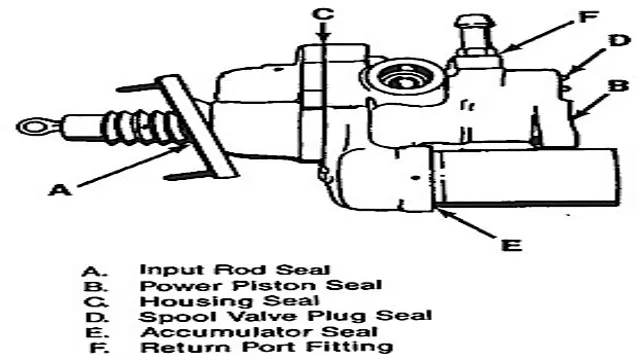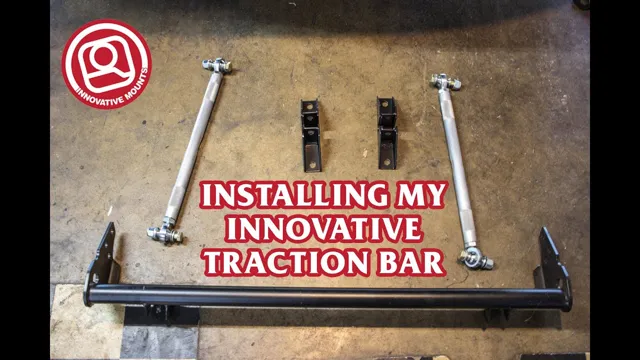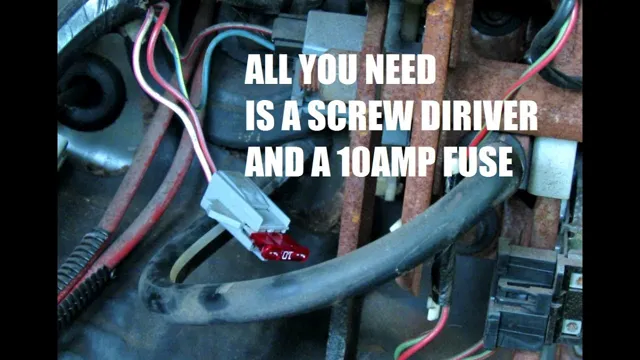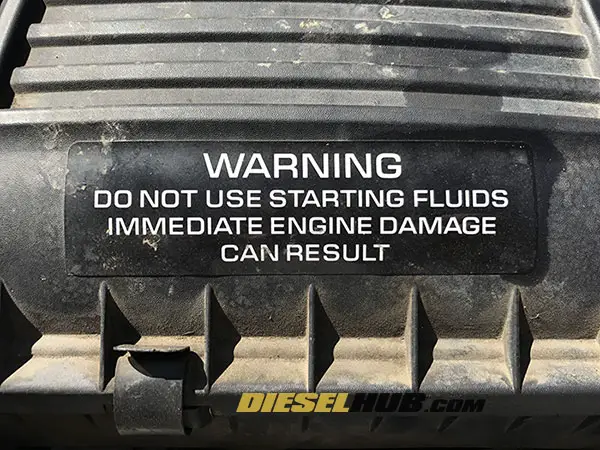Bleeding Hydro Boost Brakes Made Easy: Step by Step Guide for Smooth and Safe Braking
Bleeding brakes is a crucial part of making sure your vehicle operates safely and efficiently. However, bleeding hydro boost brakes can be a bit of a challenge. Have you ever wondered how to properly bleed your hydro boost brakes? Well, look no further! In this blog post, we will guide you through the process of bleeding your hydro boost brakes step-by-step.
We will explain what hydro boost brakes are, why they are important, and the tools you will need to properly bleed them. So sit back, grab a cup of coffee, and let’s dive into the world of bleeding hydro boost brakes.
Gather Necessary Materials
Before you start to bleed the hydro boost brakes, you’ll need to gather the necessary materials. First and foremost, you’ll need a brake bleeder kit, which typically includes a hose with a check valve, a collection bottle, and a wrench. You’ll also need a clean rag or shop towels to clean up any spills or drips.
Next, you’ll need a container of new brake fluid, which is usually DOT 3 or DOT It’s important to use the correct type of fluid recommended by your vehicle’s manufacturer. Finally, you’ll need a helper to assist you in the bleeding process.
Make sure your helper knows when to pump the brake pedal and when to hold it down. With all of your materials gathered, you’re ready to begin the process of bleeding the hydro boost brakes.
Hydraulic jack, brake fluid, brake bleeder, wrench, rags.
Before beginning any automotive repair job, it is essential to have all the necessary materials. When it comes to brake repair, you will need a hydraulic jack, brake fluid, brake bleeder, wrench, and rags. The hydraulic jack will be used to lift the vehicle so you can access the brakes.
Brake fluid is necessary to refill the brake reservoir and replace any fluid that might have leaked out during the repair process. The brake bleeder is used to release the air from the system, ensuring that it is properly bled and functioning correctly. You’ll also need a wrench to remove and replace any bolts or nuts that might be holding the brake system in place.
Finally, rags are needed to clean any mess created during the repair process. Having all these materials at hand will make your brake repair job much more manageable, allowing you to complete the task quickly and efficiently. Remember to always use safety equipment like gloves and goggles to protect yourself from any mishaps that may occur during the repair process.
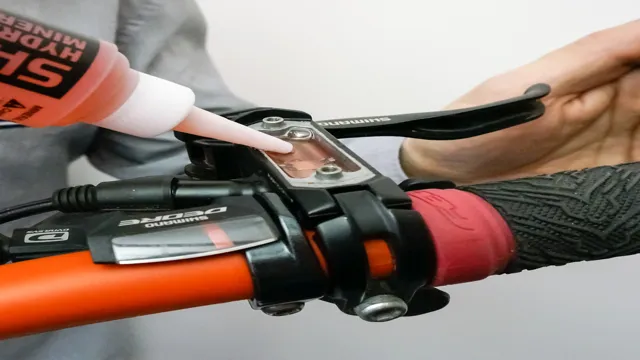
Locate the Brake Calipers
When it comes to bleeding hydro boost brakes, the first step is to locate the brake calipers. These are typically situated on each wheel and are responsible for applying pressure to the brake pads. To find the caliper, you’ll need to look for a circular or rectangular shaped component with a piston in the center.
Once located, you’ll need to locate the bleeder valve on the brake caliper. This valve is typically located on the top or side of the caliper and is used to release any trapped air in the brake lines, allowing the brake fluid to flow freely. As you bleed the brakes, you’ll need to open the valve and allow the brake fluid to flow out into a container.
Be sure to keep an eye on the fluid level and top it off as needed. With a little practice, bleeding your hydro boost brakes can be done quickly and easily, ensuring that your brakes function properly and keep you safe on the road.
Removes the wheels to access the brake calipers.
When it comes to accessing the brake calipers, the first step is to remove the wheels from your vehicle. This will give you a clear view of the calipers and allow for easy maintenance or repairs. The brake calipers are typically located near the rotors and brake pads, and may be visible through the spokes of the wheel.
Once you locate the brake calipers, it’s important to take the necessary precautions before working on them. This includes wearing protective gloves, as the calipers can get very hot during use. You should also make sure the vehicle is properly secured before initiating any work.
With the wheels removed, you can now access the brake calipers and perform any necessary maintenance or repairs to ensure optimal brake performance. By taking the time to locate and access the brake calipers, you can ensure your brakes are working safely and reliably for years to come.
Prepare the Brake Bleeder
When it comes to bleeding hydro boost brakes, one of the most important steps is to properly prepare the brake bleeder. First, you’ll want to ensure that you have the right type of brake bleeder for your specific vehicle and brake system. This may involve checking your owner’s manual or consulting with a mechanic.
Once you have the correct brake bleeder, you’ll need to prepare it by attaching it securely to the brake system and making sure all connections are tight. It’s also a good idea to run a small amount of brake fluid through the bleeder to ensure that it’s clean and free of any contaminants. Proper preparation of the brake bleeder will help ensure a smooth and effective brake bleed process, so take your time and ensure that everything is set up correctly before moving on to the next step.
Attach the brake bleeder to the caliper.
To properly bleed your brakes, you need to attach the brake bleeder to the caliper. First, you need to prepare the brake bleeder. Start by checking the manufacturer’s instructions to make sure you have everything you need.
Typically, the brake bleeder kit comes with a hose, a bottle, and a bleeder valve. Next, take the bottle and fill it with brake fluid. Make sure the bottle is securely fastened to the bleeder valve to prevent any leaks.
Next, locate the caliper and locate the bleeder valve. The valve will look like a small screw typically located on the top of the caliper. Use a wrench to loosen the valve slightly.
Then attach the brake bleeder hose to the end of the valve. Once you have attached the hose, attach the other end of the hose to the bleeder valve on the brake bleeder. Finally, tighten everything up and you’re ready to start the brake bleeding process.
Remember to keep an eye on the fluid level in the bottle and bleed each caliper until there are no air bubbles in the fluid. With these simple steps, you’ll be able to properly bleed your brakes and keep them in good working order.Keyword: bleed your brakes.
Prepare the bleeder by filling the bottle with brake fluid.
Preparing the brake bleeder is an important step in maintaining your vehicle’s brakes. One of the first things to do is fill the bottle with brake fluid. This is important because the brake bleeder works by releasing air from the brake system, and the fluid helps to flush out any air bubbles that may be trapped in the system.
It’s essential to use the recommended brake fluid for your vehicle and to make sure the bottle is securely attached to the bleeder before beginning the process. One great benefit of a brake bleeder is that it saves time and provides a safer way to bleed brakes than traditional methods. So, if you want to ensure proper brake function and safety when driving, preparing the brake bleeder is an essential step.
Bleed the Brake Line
If you’re wondering how to bleed hydro boost brakes, it’s a relatively straightforward process that requires some basic tools and a bit of patience. The first step is to locate the brake bleeder valve typically located near the brake caliper or drum depending on your vehicle’s make and model. Next, you’ll need to connect a clear plastic hose to the valve and submerge the other end in a container filled with brake fluid.
With a helper inside the vehicle applying pressure to the brake pedal, you’ll need to open the valve and allow the old brake fluid to flow through the hose and into the container. It’s crucial to keep an eye on the brake fluid level and ensure that you don’t let it run too low, which could let air into the system. Once you see fresh, clear brake fluid coming through the hose, close the valve and repeat the process until you don’t see any air bubbles in the hose.
This process takes time, but it’s essential to ensure your brakes are functioning correctly and safely. Remember, always refer to your vehicle’s owner manual for specific instructions on how to bleed your brakes properly.
Have a partner pump the brakes and hold the pedal.
If you’re looking to bleed the brake line, it’s helpful to have a partner there to assist you. Begin by having them pump the brakes a few times and then hold the pedal down. This will build up pressure within the brake system, making it easier to remove any air bubbles that may be in the line.
Next, locate the brake bleeder valve on your vehicle, which is typically located near the brake caliper. Attach a clear tube to the valve and submerge the other end in a container of brake fluid. Have your partner press the brake pedal down and hold it, while you open the bleeder valve until fluid starts to flow through the tube.
Close the valve before your partner releases the brake pedal and then repeat the process until no more air bubbles are visible in the fluid. By bleeding the brake line, you’ll ensure that your brakes are working properly and will have the stopping power you need on the road.
Untighten the bleeder valve to let old fluid out.
Bleeding the brake line can be a daunting task, but it’s necessary to keep your car running smoothly and safely. Before you begin, make sure you have all the necessary tools, including a wrench and a container to catch the old brake fluid. The first step is to untighten the bleeder valve, which is usually located near the brake caliper.
This will allow the old fluid to flow out of the system. It’s important to remember to only open the valve enough to let the fluid out, as you don’t want to introduce any air into the system. Once the old fluid has been drained, it’s time to add the new brake fluid.
This is done by filling the master cylinder with fluid and then slowly pumping the brake pedal until the new fluid has made its way through the system. Be sure to check the fluid level in the master cylinder periodically during this process to ensure it doesn’t run too low. Once the new fluid has been bled through the system, give the brakes a test drive to ensure everything is working correctly.
By following these simple steps, you can keep your brakes functioning at their best and ensure a safer driving experience for yourself and others on the road.
Retighten the valve and repeat the process until the fluid is clear.
If you have air bubbles in your brake line, it can cause your braking power to decrease. That’s where bleeding your brake line comes in. To begin the process, you’ll need to start with a clean brake line.
Next, find the bleeder valve on your brake caliper, loosen it up, and attach a drip tray. Get someone to pump the brake pedal a few times and hold it down while you loosen the valve. You should see some brake fluid coming out with some air bubbles.
Retighten the valve and repeat the process until the fluid is clear. Remember to keep an eye on the brake fluid level in the reservoir and top it up as needed. Bleeding is an essential maintenance task that is often overlooked until there is a problem.
By bleeding your brake line regularly, you will prevent air bubbles from forming and ensure that your brakes are working correctly.
Test the Brakes
Bleeding your hydro boost brakes is an essential part of maintaining your brake system, as it ensures that all the air is out of the system and the brakes are operating efficiently. To bleed the hydro boost brakes, start by locating the brake bleeder valve, which is typically found on the brake caliper. Then, attach a clear tube to the valve and immerse the other end in a container filled with brake fluid to prevent air from being sucked back into the system.
Next, have someone press the brake pedal several times and hold it down while you open the bleeder valve to release the air and fluid. Repeat this process until you see clear, steady streams of fluid coming out of the valve, indicating that all the air has been removed. Finally, top off the brake fluid in the reservoir as needed and test the brakes to ensure they are working correctly.
With a little patience and attention to detail, bleeding your hydro boost brakes can be a straightforward DIY task that can save you money and keep you safe on the road.
Confirm that the brakes work properly by testing them.
Testing the brakes is a crucial step for any driver to ensure the safety of the vehicle and its occupants. Before hitting the road, take time to test the brakes. Start by finding a safe and quiet area to test the brakes, such as an empty parking lot.
While driving the car, press the brakes lightly to see if the vehicle slows down or stops smoothly. If the brakes don’t respond immediately, or if there is a delay or noise, it may be a sign of a problem that needs to be addressed immediately. Try testing the brakes at different speeds, including high speeds, to verify that they work properly under any conditions.
Remember, brakes are not something to be taken for granted. Regularly checking the brakes can save lives and prevent accidents. Stay safe on the road by testing your brakes frequently.
Test drive the car at slower speeds before going on the highway.
When test driving a car, it’s always important to start slow before reaching high speeds. This gives you the opportunity to test the brakes, which are arguably the most important safety feature on any vehicle. Before heading out onto the highway, take some time to test the brakes at slower speeds on quieter roads.
Begin by easing down on the pedal and feeling how the car responds. Do the brakes feel firm or mushy? Are they responsive or do they take a long time to bring the car to a stop? Pay attention to any unusual noises or vibrations that may occur as well. Try to come to a complete stop and see how the car handles on a hill or incline.
These tests will help you feel more confident in the car’s braking abilities and ensure that you remain safe while driving. Remember, a car’s brakes are its lifeline, so don’t rush through this important step. Take your time and get to know your car before hitting the open road.
Conclusion
Bleeding hydro boost brakes may seem like a daunting task, but fear not! With the right tools, patience, and a steady hand, you can become a brake bleed master. Just remember, when it comes to brake safety, take it slow and steady. And always remember, if you’re feeling a little light-headed, take a break and grab a snack.
.. or call a professional.
“
FAQs
What is a hydro boost brake system?
A hydro boost brake system is a type of power brake system that uses pressurized fluid from the power steering pump to assist with brake pedal operation.
Why might I need to bleed my hydro boost brake system?
Hydraulic brake systems, including the hydro boost system, can develop air bubbles or pockets in the lines and components, which can compromise braking performance. Bleeding the system helps to remove these air pockets and ensure proper brake function.
How often should the hydro boost brake system be bled?
The frequency of brake system bleeding can vary depending on the specific vehicle and driving conditions. In general, it is recommended to bleed the brakes every 2-3 years or anytime the system is opened for repairs or part replacement.
Can I bleed the hydro boost brake system myself, or should I have a mechanic do it?
While it is possible to bleed the brake system yourself using the proper tools and techniques, it can be a complex process that requires some mechanical aptitude. If you are unsure about your ability to perform a brake system bleed, it is generally safer to have a qualified mechanic do it for you.

